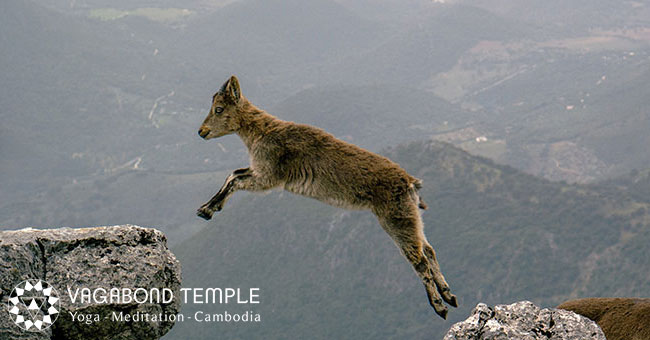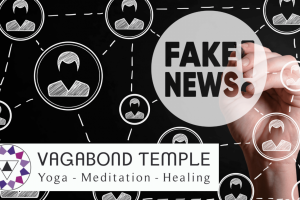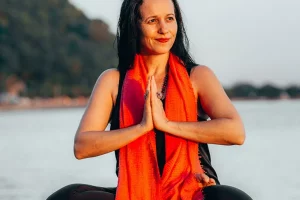Trust Yourself

Do you think about the life you live? What is your purpose? Do we even have a purpose? If so how are you meant to find out what yours is? If not then what are we even doing here? What does it all mean?
These are not easy questions, so it is no surprise that many of us give up, or don’t even bother asking and just try our best to go along with what everybody else is doing – keep your head down, try to be “normal” to avoid any embarrassment. But even as a fully paid up member of the bemused herd, you will find yourself with plenty of questions. Am I attractive / rich / successful / confident / funny enough? What job should I do? Should I upgrade my phone or save up for a nice holiday on the beach? What should I have for breakfast?
Whatever questions you have, there are no shortage of people willing to give you the answers: your friends, family, teachers will all have an opinion, along with a whole host of certified experts in the form of psychotherapists, life-coaches, gurus and all of the rest.
You may find some satisfaction in seeking answers from other people, but pretty soon you are going to run into problems. If you seek validation from others you may become dependent on it to be happy, which is almost universal in modern society (no surprise given the type of “education” and “entertainment” we are exposed to). Or you may think yourself into disbelieving the validation, imagining that people are just telling you what you want to hear (yes you ARE sexy enough). Also how do you know the experts really have the answers? Have you just swallowed some religious dogma that seemed to make sense at the time but now the cracks are starting to appear and you find yourself back on the path to confusion and doubt? How do you know the values of the society you live in actually serve you and allow you to be your optimal self, how do you know you have not simply been brainwashed into a life of docile servitude?
Wandering, bleary-eyed, through the land of make-believe, finding only temporary satisfaction, you may come to the realization the life is way too short to play games and you want to find something more substantial.
So who do you turn to? The answer isn’t staring you in the face, it is the one who is doing the staring – yourself!
“The place you are looking for is the place from which you are looking” Mooji
Mooji, like any spiritual teacher who knows what they are talking about, will not provide you with answers but invite you to look inwards. This has the central tenant of Eastern philosophy going back thousands of years.
Western Science has revealed much about the world as we perceive it, however when it comes to that which is doing the perceiving (the human mind) there has been a tendency try to measure and classify it, as if it was an object like any other. In the early days of psychology, the technique of introspection (where the psychologist examined the contents of their own mind) used to be prevalent. However it was soon dismissed as not being “Scientific” enough – people seem more comfortable with things that can be measured: producing numbers which can used to plot pretty looking graphs. The limitations of this approach become obvious when you think about it: we may know which areas of the brain control which parts of the body and so on, but how can we understand why we have awareness at all? Who is it that is aware of the mind and the body? This may be difficult to understand for somebody who has only been exposed to the Western materialist perspective: if you are interested, try a google search on “the hard problem of consciousness” – there are people who can explain this a lot better than I can! To put it simply, in the Eastern world view, mind comes before matter: consciousness is not something created by the brain, but something universal which we all share. Many monotheist religions and modern Western materialism view the world and other people as separate from ourselves – so no wonder so many people feel lonely and alienated.
William James, a leading 19th Century philosopher and psychologist, who heavily relied on introspection, came to the following conclusion:
“There is but one cause of human failure. And that is man’s lack of faith in his true Self”
This is exactly the same conclusion that the ancient Eastern philosophers came to: the real answer lies within. The only true Guru is the one inside of you.
But if the answer is inside, why don’t we see it? One reason is that our senses bombard us with so much information that it is difficult to look inwards. An attractive person, somebody who annoys you, the sound of a dog barking – all of these things can potentially lead to a whirlwind of thoughts and actions that can make simple introspection impossible. The power of the senses to carry the mind away is beautifully illustrated in the Bhagavad-Gita:
“Whichever among the various senses the wandering mind becomes engrossed in that sense certainly leads astray his intelligence like the wind snatches away a boat on the water” C1:V3
In Buddhism we can also find the idea of turning away from the senses:
“As a water bead on a lotus leaf, as water on a red lily, does not adhere, so the sage does not adhere to the seen, the heard, or the sensed.” The Buddha (Jara Sutta)
But how can we look inside when the outside world seems so intent on distracting us? In the Yogic tradition, one way to prepare the mind for looking inwards is known as Pratyahara, or withdrawal of the senses. The analogy often used is a turtle drawing into its shell, an excellent way to visualize this practice.
In ancient India, there was a tradition that continues to this day, where a person choses to totally withdraw from society– heading to the mountains or jungle to live as a hermit. We don’t need to go to such an extreme to practice Pratyahara though. Anybody who spends time in a retreat or a culture very different from their own will have the opportunity to examine their previous way of life – perhaps revealing it to be not so healthy, maybe even toxic and destructive to one’s optimal state of being.
Bringing a meditative attitude to our lives is one of the ways we can practice Pratyahara. For example by moving our attention from the outside world to our breath. Or by being more aware of our thoughts: if somebody insults you try simply watching your thoughts and emotions instead of punching them in the face.
“Whoever doesn’t flare up at someone who’s angry wins a battle hard to win.” The Buddha (Akkosa Sutta)
Developing this “Witness” attitude to the world is a powerful way to stop your senses taking control of your thoughts and actions.
Pratyahara is a form of preparation that allows you to take the next steps, into deep concentration, meditation, and eventually to the indescribably state of being where there is no “I”, no outside world, only pure awareness. This is the ultimate aim of the Yogic path, complete Union – which is the end of all suffering. Definitely more worthwhile than upgrading your phone or taking that holiday in the sun!
Follow the path of turning inwards and you will find all the validation and security you will ever need, as well as the answers to the “big” questions. In the Taoist tradition this is illustrated as follows:
“When you are content to be simply yourself and don’t compare or compete, everyone will respect you.” Lao Tzu, Tao Te Ching
At the deepest level, what these mystics and philosophers are really pointing it at is that each individual in a reflection of the entire universe, that the entirety of creation can be found each and every one of us rather than somewhere “outside”. In practically every religious tradition, even those normally identified as monotheistic, you can find this concept. For example Meister Ekhart the 14th Century Christian mystic stated:
“The knower and the known are one. Simple people imagine that they should see God as if he stood there and they here. This is not so. God and I, we are one in knowledge.”
Many people are familiar with the idea of man created in the image of God in the ancient Jewish tradition:
“God now said, ‘Let us make human beings in our image, after our likeness… ” Genesis 1:26
In the mystical interpretation, this does not mean that God is a big man with a beard, watching our every move and desperate to punish us for doing anything fun. Rather it means that man and God are the same, one is a reflection of the other. In the Christian New Testament we have:
“nor will they say, ‘Look, here it is!’ or ‘There!’ for behold, the kingdom of God is in the midst of you.” Luke 17:21
So essentially, regardless of the tradition, the message is the same: look within, trust yourself. So simple but not so easy to put into practice. Pratyahara is a powerful starting point – so next time you are struggling for an answer, before rushing to seek validation and advice, just try being a turtle and spend some time in your shell.



